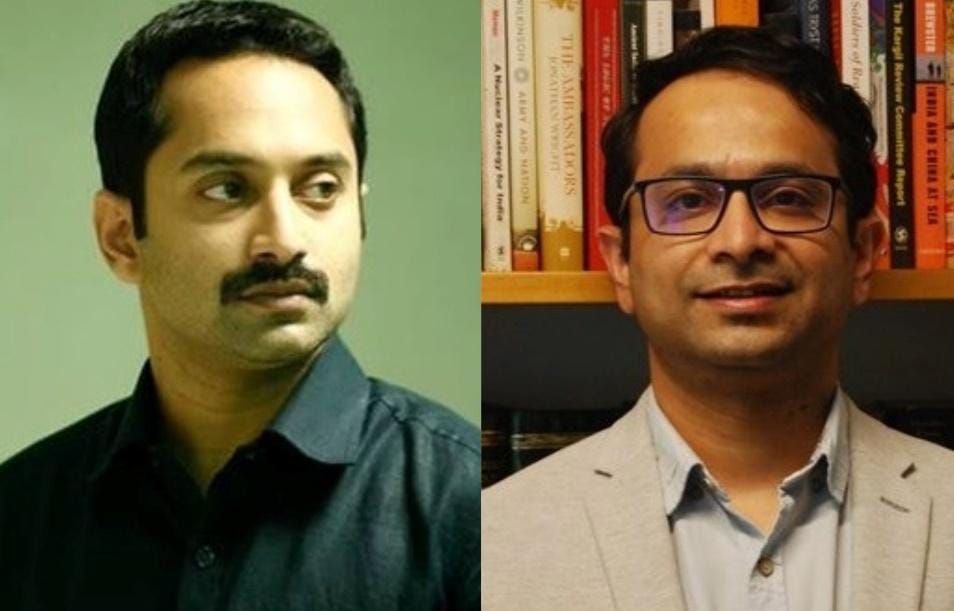You Can’t Escape The Consequences Of The Israel-Hamas War
Kong Qiu, or Master Kong as he was known, has had a greater influence on philosophical thought after he died, but he was vastly underappreciated when alive. In fact, his ideas were received with scorn (mostly because other influential people of his age did not think what he thought) — a fate that has befallen some of the greatest thinkers in history.
We know Master Kong as Confucius, of course, and one of many thoughts he left us with was about preparedness. “The superior man,” Confucius said, “when resting in safety, does not forget that danger may come. When in a state of security, he does not forget the possibility of ruin. When all is orderly, he does not forget that disorder may come. Thus, his person is not endangered, and his States and all their clans are preserved.”
To cut a long story short, we will rely on Sun Tzu — Confucius’ ‘Spring and Autumn Period’ contemporary. “In war, prepare for peace; in peace, prepare for war,” the great military strategist said.
Last week, Takshashila’s scholars told us exactly that during our internal conference where three important papers were presented in the context of the Israel-Hamas war: The first one was on China’s response to the Israel-Hamas war following the latter’s October 7, 2023, attack. It discusses China’s crisis diplomacy and provides an assessment of the interests and risks that are driving Beijing’s engagement in the region.
The second paper was an appraisal of the potential techno-economic risks for India by considering four possible scenarios that could unfold over 2024. These scenarios are not meant to be forecasts, and actual outcomes may comprise elements from more than one of those outlined. Instead, the scenarios considered are meant to assess the risks in terms of probability and impact. The scenarios also help us identify enduring trends and interests that inform India’s diplomatic approach to West Asia.
The third paper was on the impact of the Israel-Hamas war on the bioeconomy. Israel has a mature biotechnology ecosystem marked by a strong international presence. Its institutions are involved in both research and development (R&D) and manufacturing of bio-based products, majorly targeting the US and European markets. The ongoing Israeli conflict with Hamas has had a limited impact on operations within the biotechnology sector. If the war ends, the biotechnology industry will likely resume operations to pre-conflict levels. However, if it continues for a long time, the confidence of foreign investors and companies will likely diminish. This could stall the progress of the biotechnology sector in Israel. However, this could create an opportunity for India to attract these companies to set up facilities within India.
All three papers not only look at the current situation, but also provide scenarios for the world at large, and India in particular. They are both fascinating in their scope and deep in their analysis.
The writers continued their fine work with a series of podcast episodes in which they not only spoke about their findings but also focused on the immediate consequences of ignoring what’s going on
You can read the papers here (China), here (tech), and here (bioeconomy). The podcasts are here (China) and here (tech).
What’s Common Between Zoya Akhtar, The Archies, and Pranay Kotasthane?
Last week, we asked a very important question on Pranay Kotasthane, Takshashila’s deputy director. It bears repetition, so here it is: Do you think Pranay moonlights as Fahadh Faasil in Malayalam cinema?
This week, we ask another important question: What is common between Bollywood writer-director Zoya Akhtar, her new Netflix movie The Archies, and Pranay? The answer is not difficult to find because what Zoya and Pranay did with their latest ventures is this: they Indianised their cinematic and literary offerings. Zoya Indianised The Archies (and going by the reviews, pretty successfully) while Pranay and his co-author Abhiram Manchi have made their book ‘When The Chips Are Down’ so relevant to India that it stands out as the best in its genre.
We have written about ‘When The Chips Are Down’ earlier, but both its authors, Pranay and Abhiram, appeared in the latest episode of the ‘The Seen and the Unseen’ podcast by the formidable Amit Varma. It is a short episode by Amit’s epic standards — just a little under three and a half hours — but it is filled with so many insights and backstories that we fear it may affect the sales of the book.
So, here’s another plug. Pranay and Abhiram’s book offers a comprehensive overview of a “meta-critical” technology, and looks at how semiconductors are important from a geopolitical perspective; how the US and Taiwan become powerhouses in this domain, while Russia and India fell behind; is China’s semiconductor sector a threat to the world; and what are the future trends to watch out for.
You can buy this fascinatingly simple-to-understand book here.
Pranay was later interviewed by Outlook Magazine as well. You can read it here.
That Sound You Hear In Strategic Manoeuvres? Yes, It Could Be A Chinese Drone
Bharat Shakti’s Editor’s Note to Takshashila analyst Anushka Saxena’s insightful piece on Chinese drones is an eye-opener of sorts.
It reads:
“A significant upward trend on the graph marks the usage of drones across various stages of military operations. From pre-operation stages involving surveillance and reconnaissance to becoming integral components or contributors to the swift execution of the Kill Chain, drones play a crucial role. The Chinese military is making substantial investments to integrate drones seamlessly into their force deployment. Advancements in swarming technologies, coupled with the convergence of the Fourth Industrial Revolution (4IR) and 5G, indicate that drone usage is poised to substantially impact outcomes in both actively operational and simmering zones.”
It is an apt introduction to another tour-de-force by Anushka on the increasing capabilities of the Chinese defence force — the People’s Liberation Army.
Anushka writes:
“Chinese military strategists have been studying global developments in drone swarming to understand precisely the nature of the requirement. For example, in 2021, Chinese military media 81.cn published a report on “Autonomous Propulsion Force 4.0,” a British Royal Navy programme for experimenting with swarms of drones in the air and at sea. Similarly, Sina’s 2023 Military UAV Industry In-depth report encourages the Chinese military apparatus to take lessons on UAV swarming from the ‘Five Priorities for the Air Force’s Future Combat Air Force’ document published by the US Army. The same report also studies how individually operated drones have been swarmed to overwhelm a target in Syria and the Russia-Ukraine War.”
Should India be worried? Perhaps not at this stage, but certainly concerned enough to act?
“The Chinese drone swarming programme hasn’t achieved combat-ready perfection, as multiple challenges potentially plague such a programme. For example, during its 2018 display, EHang reported that it faced difficulties in syncing the drones and cited “external interference” with the GPS mechanisms of 496 drones, indicating that a few drones in a swarm may experience bandwidth and positional lag that may sabotage the swarm system as a whole. It is an issue likely to grow as swarm sizes expand, and establishing fool-proof connectivity and communications mechanisms becomes expensive and skill-intensive. And this is not just exclusive to intra-swarm communications – the relay of information through the data link established between the drone swarm and the control centre on the ground is a hurdle the Chinese have yet not been able to cross.”
Read Anushka’s piece here.
The Elephant In The Room: India’s Alleged Role in the Nijjar-Pannun Saga
Two Takshashila analysts wrote about the ongoing saga of India’s alleged involvement in the killing of a Canadian citizen and listed Khalistani terrorist Hardeep Singh Nijjar and American-Canadian citizen Gurpatwant Singh Pannun, also a listed terrorist in India.
On November 29, the US Justice Department made public its indictment in the alleged plot to kill Pannun by an Indian national Nikhil Gupta and his alleged handler, an Indian government employee dubbed CC-1 in the document.
Lt Gen Prakash Menon writes in The Print:
“India’s alleged involvement in the killing of Sikh separatist Hardeep Singh Nijjar in Canada and in the plot to assassinate Gurpatwant Singh Pannun in the US against the so-called ‘Khalistani’ threat throws open a question that Chanakya’s Arthashastra offers an answer to. Morality and legitimacy in the utilisation of violence in statecraft are often in mutual conflict. According to the Arthashastra, if morality is seen as pursuing a ‘just cause’ that would eventually lead to a more prosperous and secure state, then it is the guiding light for the use of violence and other coercive means. There is, however, a difference between the means employed to address internal and external enemies. For the external enemy, Bheda (logic or trickery) and Danda (force) can be employed, but for your own people (especially those in the core of the kingdom), all means except force can be used. In the former, the use of force is seen as moral. However, Matsya Nyaya (law of the jungle) in the internal realm can also be curbed through force. These principles provide the guidelines for the legitimate use of violence.”
Meanwhile, in his fortnightly column for The Free Press Journal, Sachin Kalbag says that the strategic relationship between India and the US may remain unaffected in the long term because both countries are highly invested in each other.
“In October, a senior US intelligence official visited India and informed New Delhi of the findings of their probe. On November 18 — 11 days before the indictment was made public — India constituted a high-level inquiry panel to investigate the matter. During this months-long process, neither country uttered a word in public.
This was both intentional and pragmatic. The US could not be seen as making unsubstantiated allegations (certainly not after what Canadian Prime Minister Justin Trudeau did in September) against an important partner like India, a country with which it has worked hard to rebuild substantial strategic relations over the last two decades. And India could not afford to antagonise or retaliate the US in the same way it did with Canada.
India and the US need each other because of both shared values (democracy, individual freedoms, etc) and shared concerns (oil prices, growing military conflicts, etc). But more than these, India and the US need each other for one primary thing: China. For different reasons, admittedly, but China looms large.”
You can read Lt Gen Menon's piece here, and Sachin’s piece here.
Sachin and Takshashila scholar Yusif Unjhawala also did an All Things Policy podcast episode on the topic. You can listen to it here.
Wait, There’s More!
We had an energetic and highly engaging Ideas Shala at our office last week. A stellar cast of experts, combined with panel discussions, an unconference, hands-on exercises, and of course, our all-time favourite — a game of Nagara! Become a part of the upcoming cohort of the Graduate Certificate in Public Policy (GCPP) to join the next Ideas Shala.
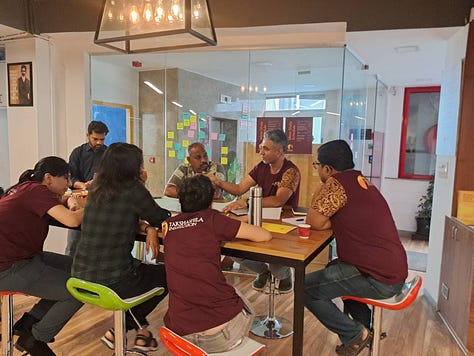
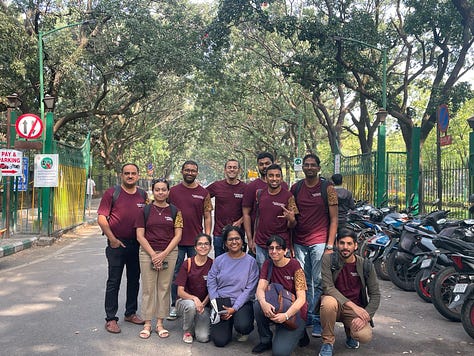
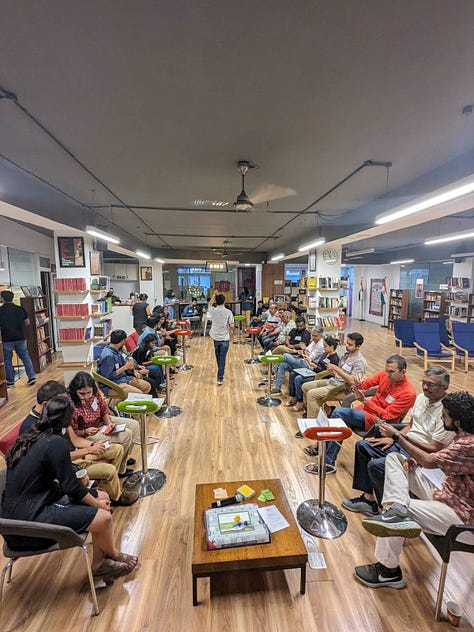

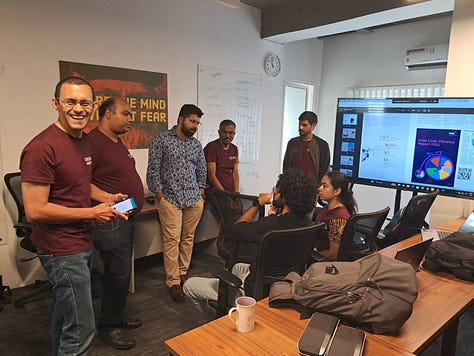

Over the weekend, we also had a Policy Adda at the Bangalore International Centre featuring Ananya Desai (Assistant Programme Manager), Satya Sahu (Research Analyst, High-Tech Geopolitics Programme), Rijesh Panicker (Fellow, High-Tech Geopolitics Programme), Anushka Saxena (Research Analyst, Indo-Pacific Studies Programme), Amit Kumar (Research Analyst, Indo-Pacific Studies Programme), Y. Nithiyanandam (Professor, Head of Geospatial Programme), Bharat Sharma (Research Analyst, Indo-Pacific Studies Programme), and Kripa Koshy (Programme Manager) from the Takshashila Institution.



Our favourite All Things Policy episode of the week is Manoj Kewalramani’s interview with Philip Green, the new Australian High Commissioner to India, on the priorities for the two sides going forward. The past few years have witnessed the rapid growth of the India-Australia relationship. The agenda for bilateral partnership has expanded significantly from trade and security to emerging technologies and human capital development. The podcast episode bares everything you wanted to know about India’s relationship with Australia, and what it means to this decade and beyond. Listen to it here.
Applications for the GCPP Jan’24 are Open
That’s all from us this week. Take care!





